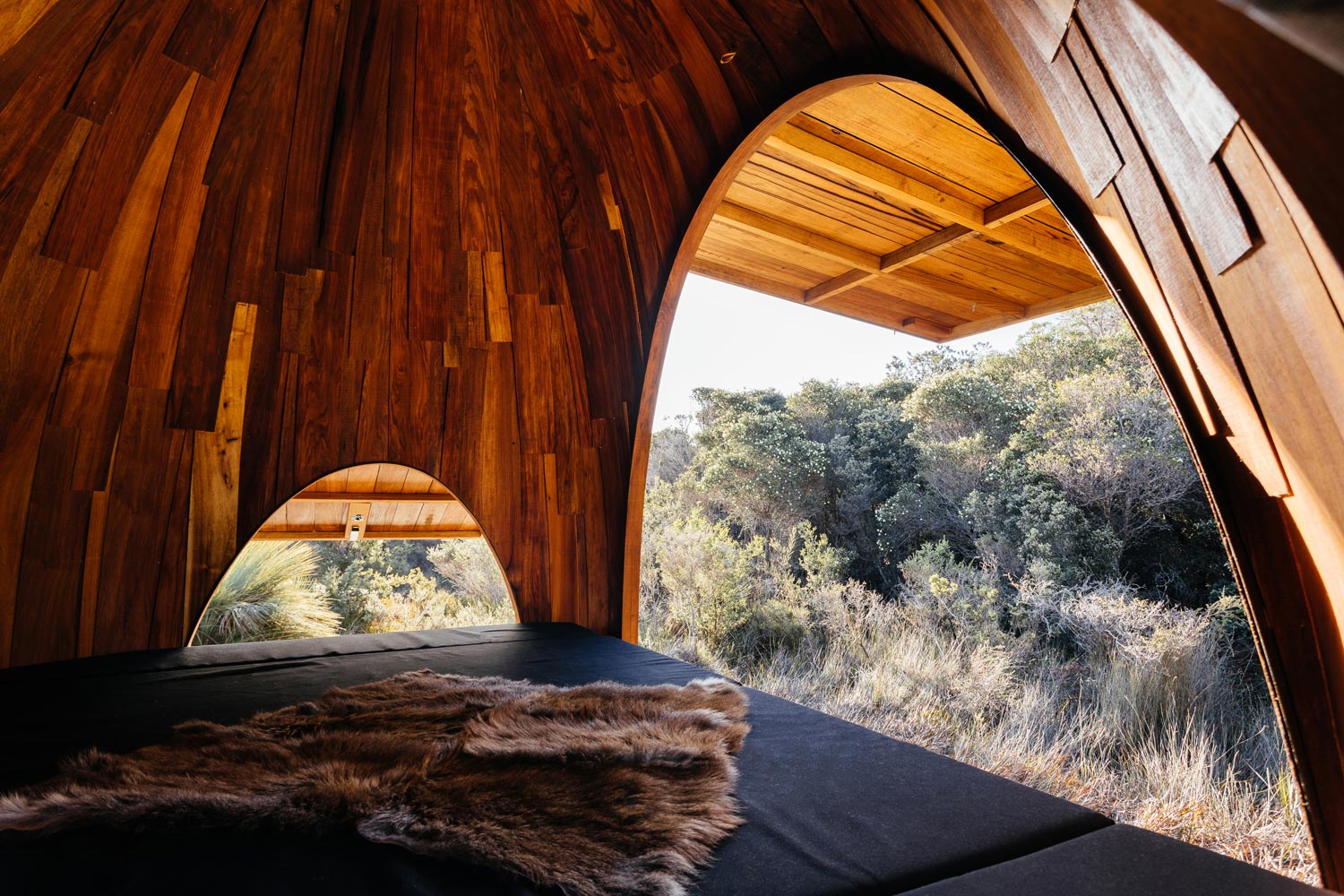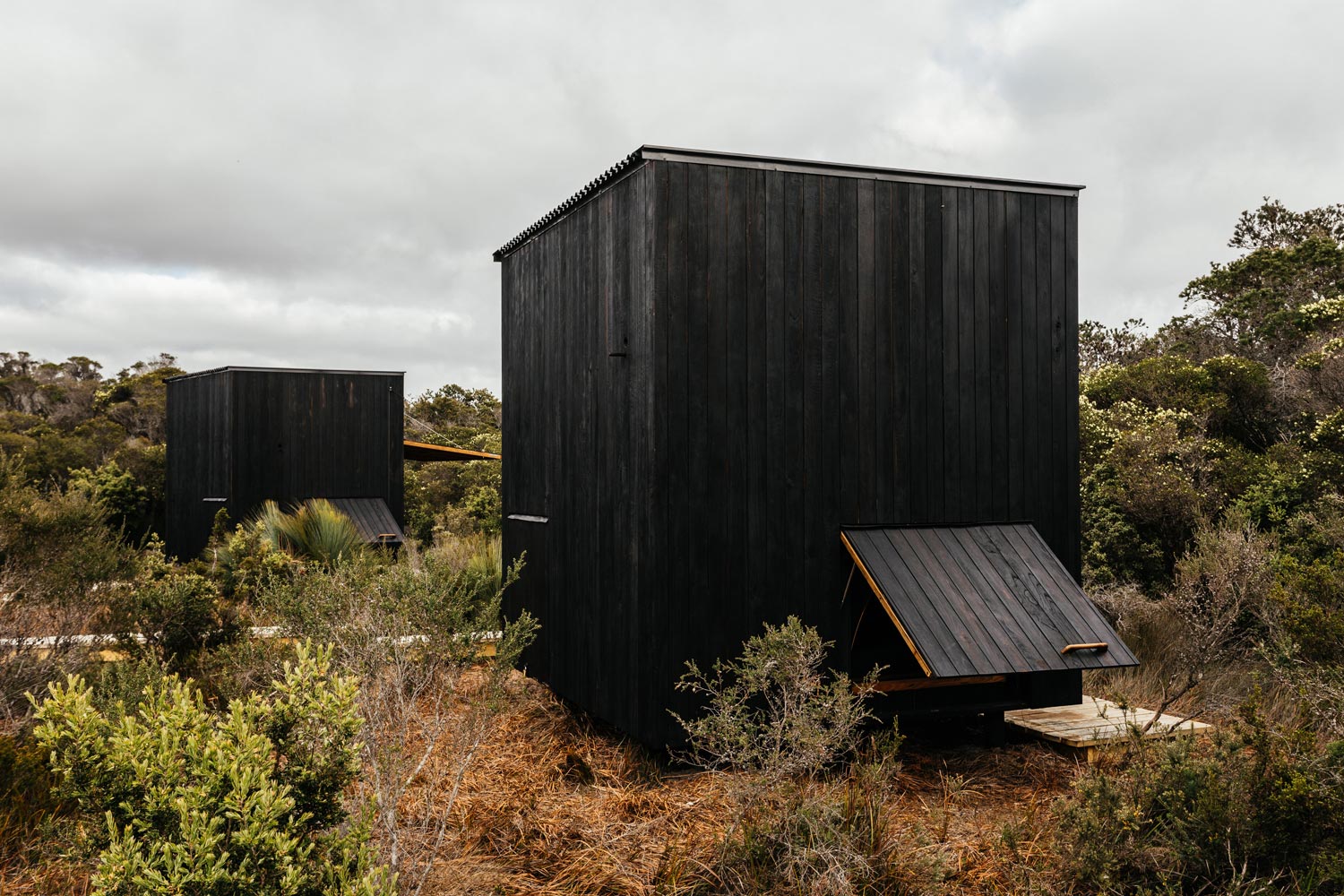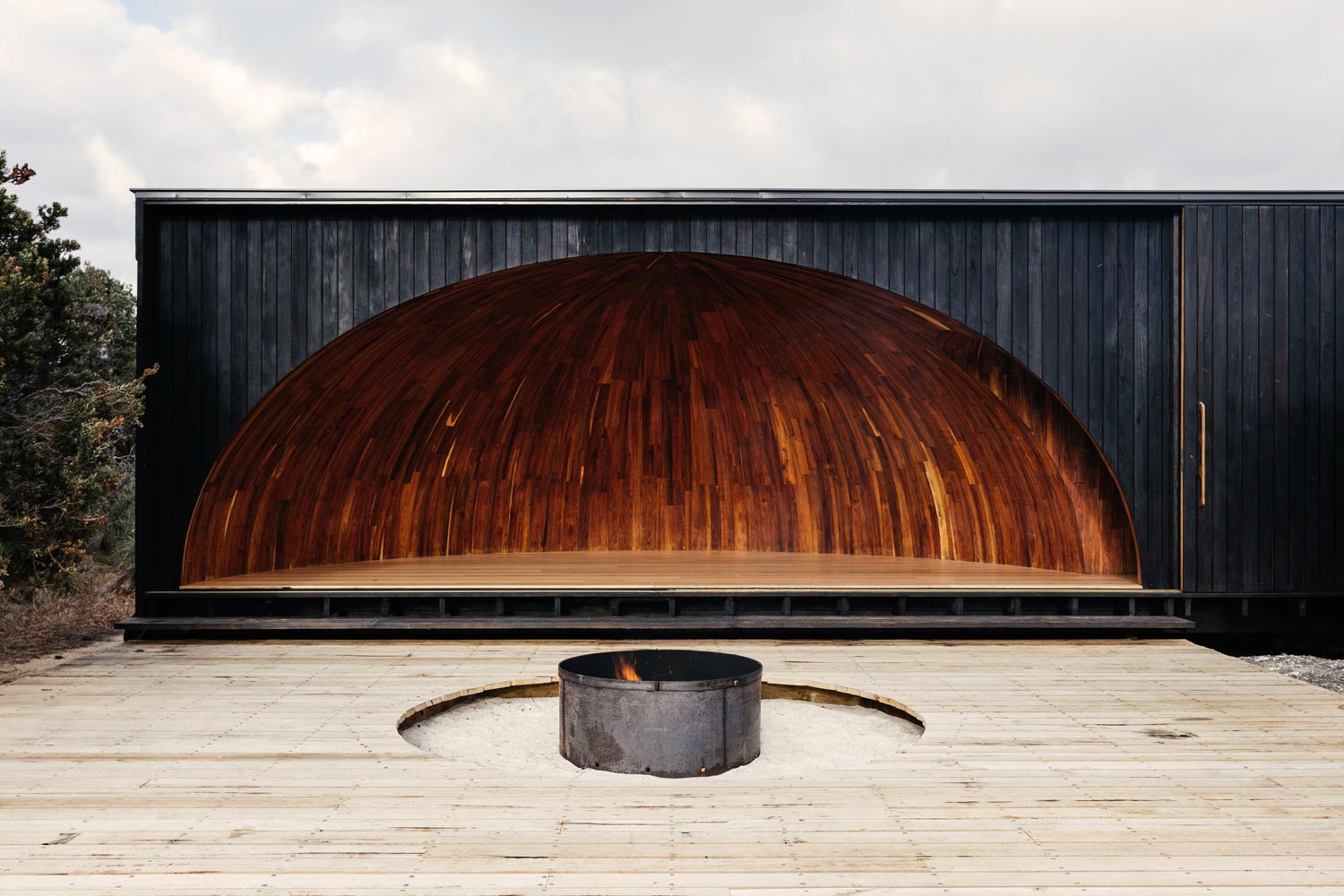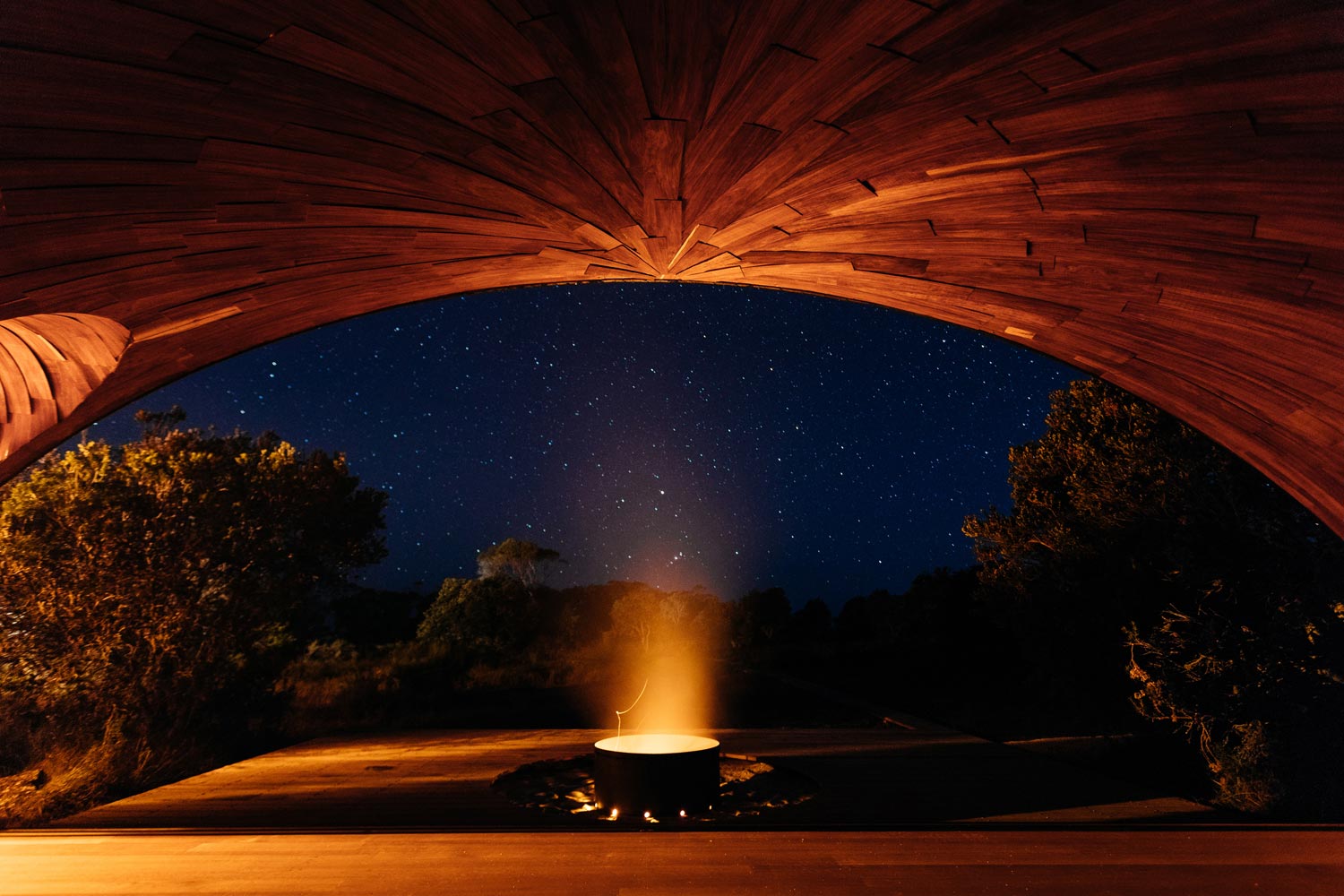krakani-lumi
Taylor and Hinds Architects
This standing camp (krakani lumi or ‘place of rest’) in Tasmania’s North East National Park was created for the Aboriginal Land Council of Tasmania. The site fringes the northern edge of the Bay of Fires, and serves as a two-night stopover for a four-day guided walk through the cultural landscape, from wukalina (Mt William) to larapuna (Eddystone Point). It is the first walk of its kind in Tasmania that is entirely owned and operated by the Aboriginal Land Council.
The brief required accommodation and communal facilities for two guides and ten walkers. Impossible to see until arriving, krakani lumi is enveloped deep within a grove of Banksia marginata. Clad in charred Tasmanian timber, the individual structures appear as a series of discrete dark pavilions, merging as shadows into the surrounding dense banksia, and camouflaging the camp when it is not in use.
The exteriors of the individual structures are robust, tautly detailed and resilient to the corrosive sea air and tampering. When each structure is opened, a warm half-domed blackwood-lined interior is exposed. Within the sleeping huts, the bedding is supplemented by quilted wallaby furs – known traditionally as reore – and the space is scented with the essential oil of the local Maleleuca ericifolia: a flower that was traditionally used to aid sleep and which grows in abundance in the area.
The building was to be entirely self-sufficient and located with minimal impact within the Mount William National Park. However, it was the cultural dimension of the brief that was particularly remarkable. The inspiration for the project grew from the architects’ introduction to the site by Aboriginal Land Council of Tasmania Chair Clyde Mansell and General Manager Graeme Gardner. During mid-winter, they were taken to the site, walked along the coast and shown an enormous cultural site: a vast midden that forms an entire promontory of coastline – human made over countless millennia.
Prior to this moment, Taylor and Hinds Architects felt they understood the landscape of the north-east relatively well. Both partners were Tasmanian-born, and had spent a good deal of their childhood and adult lives camping, surfing and walking in the area. But their sense of this landscape’s depth was irrevocably changed. They were told the creation story of palawa and the Great Emu, and were mindful that it was possibly the oldest story they had ever been told. The area seemed enlivened by this story – a cultural landscape given meaning by an ancient retelling of its creation.
Episodes within the post-colonial story of the Aboriginal Tasmanians are marked by tragedy and dispossession. This landscape holds a significant place in the fabric of this story. It is the traditional country of Mannalargenna, who is an important ancestor to the Tasmanian Aboriginal community. The telling of the creation is an initiation into the spiritual and cultural interior of this landscape. The creation is passed on through an accumulation of cultural knowledge and wisdom. It is not a widely known story, and this project was to serve as the place for its telling. Taylor and Hinds understood from this moment that the architecture of the project had to carefully bear witness to and help facilitate this ‘speaking into being’ of country.
The proportion and materiality of the vaulted interiors of krakani lumi are derived from the siting, form and qualities of the traditional seasonal shelters of Tasmania’s first peoples. Predominantly made of arched branches and sheets of bark, the interior of the traditional half-dome structures were often covered in charcoal drawings of circular motifs, and depictions of the constellations. The open spatiality of the traditional half-dome form amplifies the experience of dwelling within a larger landscape room. This context and the notion of the story-telling interior is an important rationale for krakani lumi. Through the revelation of the interior, a story of concealing and revealing is told, which belongs to the privileged cultural experience.
Photography: Adam Gibson




